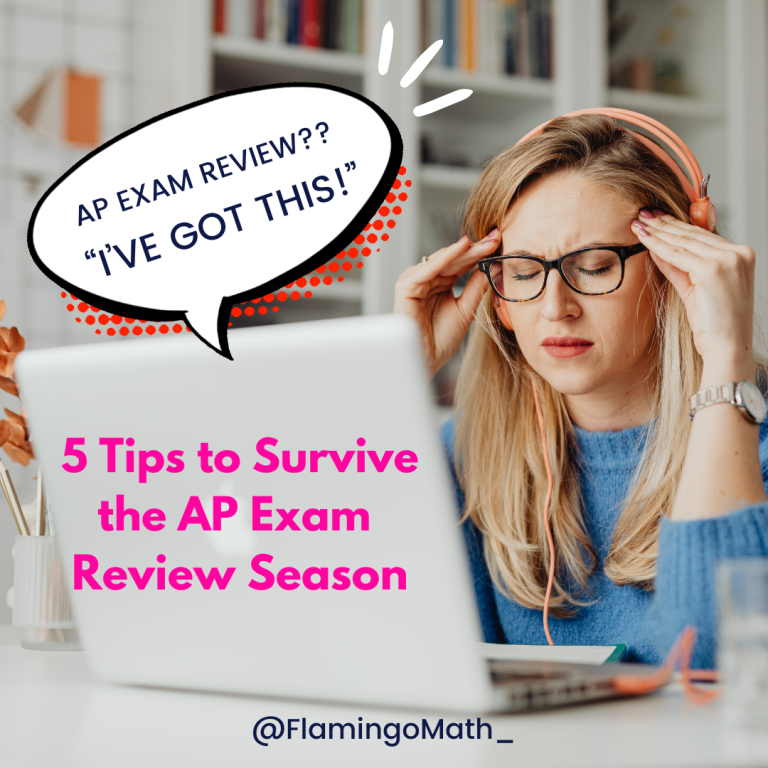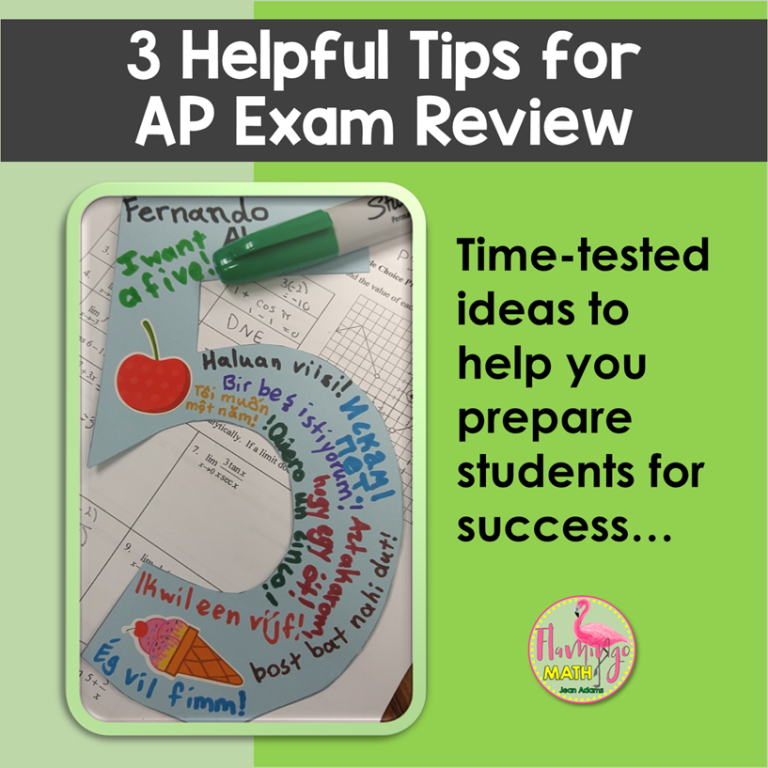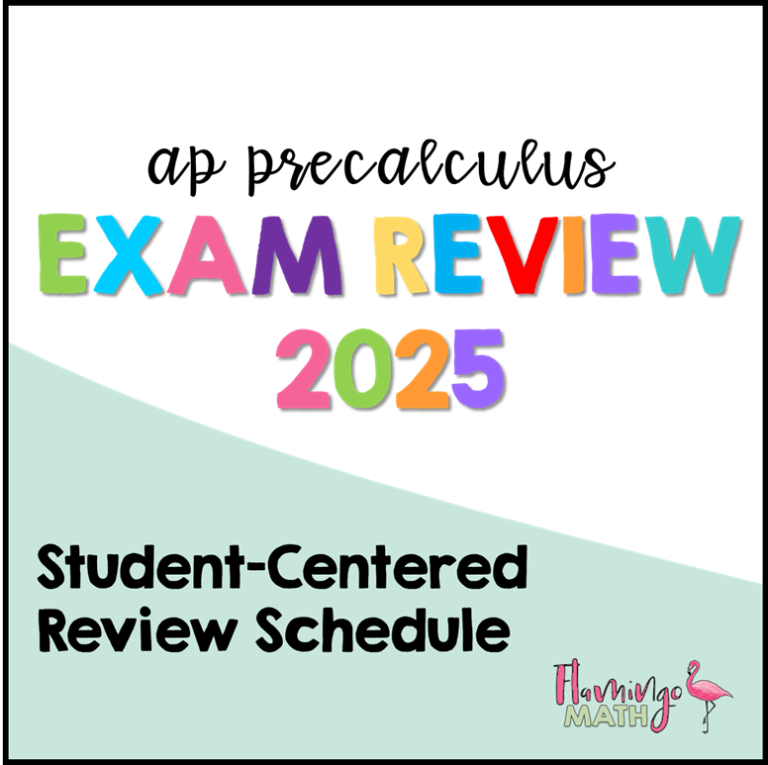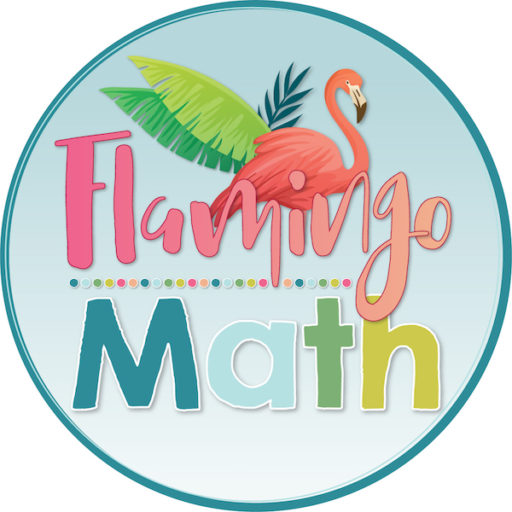
“Oh, But You Teach Honors Classes and Those Kids Know How To Stay Organized!”
“So, why would you want to use Foldables?”
I hear this from friends and colleagues every year. Seriously people, my honors students struggle with organization skills just like the rest of us. It’s true that I fell in love with Dinah Zike’s Foldables© way back in 2001, when I first saw her presentation at a county inservice for the adoption of our new district/state Algebra 1 textbooks. I was sold on the concept since I was the designated “Queen of Algebra 1B,” (the second year of algebra 1 for struggling students).
Do you use graphic organizers or Foldables of any type in your honors classes? Every year I’m asked to explain how I use my 8-page bound-book-style Foldables in my Algebra 2 and PreCalculus classes. I usually send a personal email to those who ask with an explanation of what I do. But this year I thought I would just show you. It should be noted that there is a difference between notebook foldables and graphic organizers, which are usually stand alone documents. When I first began to create notebook foldables my students met for 90 minutes every other day. I would hand them a blank sheet of colored paper as they entered the class and we would collaborate on the type and style; and, then we would FOLD! Now I have 50-minutes classes and the content is much more intense. It seems we teachers are asked to cover more material with fewer instructional days now. This is what brought me to create a full line of pre-designed graphic organizers with a little twist. I left the 8th page blank to encourage my students to OWN THEIR NOTE-TAKING TALENTS! I haven’t regretted a single day. Every year I get emails and personal notes from students who are attending universities around the U.S. who take the time to tell me thank you for helping them to CREATE their own personal Foldable Book, and how it has helped them survive those “next classes.”
Tomorrow morning will be the day we begin this glorious journey of note-taking by hand. A 2014 study by Mueller and Oppenheimer showed that students retain information better when they have handwritten notes over typed notes.
FIRST… MAKE IT PERSONAL
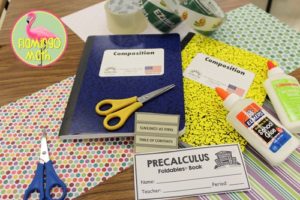
When students personalize their composition book, taking notes becomes a journal rather than an assignment for my course. In fact, I don’t give a grade on their notebooks any longer. I make it a point to explain that this is for them, not for me. Students have a stack of colorful scrapbook papers from which to choose, along with a label for the cover and tabs for the table of contents and first unit. A little glue, scissors, and some Duck Tape to make a waterproof layer are also needed. Even the most sophisticated students loosen up when they see the fun in making it personal. Some students will get into a competition. The event becomes a team building and bonding experience every year.
SECOND… SETTING IT UP
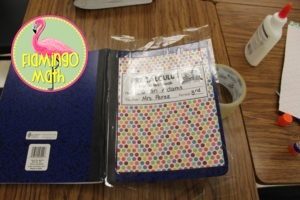 Have your students glue the scrapbook paper onto the front, then the course label next. I always demonstrate how to weatherproof the front cover with five overlapping strips of Duck Tape. Instruct them to leave about an inch extra on the top and bottom. (Be prepared for an amazing lesson in the talents and small motor skills of teens.) Once the entire front is covered, then have them trim off the excess tape. This will help their books survive at least one night on the football field or a soda spill.
Have your students glue the scrapbook paper onto the front, then the course label next. I always demonstrate how to weatherproof the front cover with five overlapping strips of Duck Tape. Instruct them to leave about an inch extra on the top and bottom. (Be prepared for an amazing lesson in the talents and small motor skills of teens.) Once the entire front is covered, then have them trim off the excess tape. This will help their books survive at least one night on the football field or a soda spill.
Now it’s time for the inside set up. I like to make pockets and have a table of contents for the entire course.
THIRD… THE POCKETS AND TABLE OF CONTENTS TAB
The next step will be to create a pocket for holding the Syllabus. Fold down the outside corner toward the center of the binding. Open this triangular flap up and glue in place.
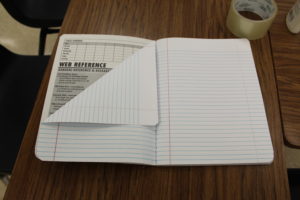
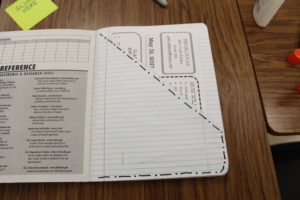
Then, either tape this folded page around the bottom to the next page, or run a bead of glue around the bottom edge to secure it to the next full sheet of paper. This creates a pocket right in the front to hold important documents. I like to glue a label for the Table of Contents here. You can download an editable free template here.
Next, a table of contents is in order. Decide how you want to organize this. If you are on a nine week quarter schedule use four pages, or maybe you want them to do a table of contents for each separate unit. After the table of contents is created, we make one more pocket for the first unit of study. This will hold quizzes, tests, and a handout for Learning Objectives and Scales for the unit. Now we are ready to go!
FOURTH… LEFT-SIDE, RIGHT-SIDE, AND META-COGNITION
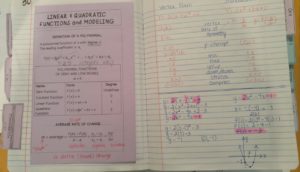
Remind students that their Foldable book is not to be used for homework. It is for learning and meta-cognition (thinking about learning). When we do bell work questions, often it is related to prerequisite skills for the upcoming lesson. It just makes sense to record these prompts into their personal books. When it’s time to teach a difficult section that needs a reminder from the past, I will have my students work cooperatively to recall those ideas and concepts learned in prior classes. Or, maybe a concept jut didn’t click, and needs to be retaught. Can you say Rational Functions? We might take two or three extra pages to explore those forgotten skills, break them into smaller chunks, and dig deeper. I recommend that my students choose a side…left or right where they will glue their completed Foldable. Then, they can use the other side for the extra things. When a lesson takes more than a class period to complete, the pocket at the start of the unit is a great holding place.
FIFTH… LEARN TO LET GO!
Be the guide on the side. We don’t have to give a grade for everything students do. Help them to explore and investigate, as much as possible. I’ve found that by removing the pressure of working for a grade that my students are more willing to discover and cooperate with peers when given a designated place to record those “Ah-ha” moments. It will bring success for them and an attitude of thanks to you later.

